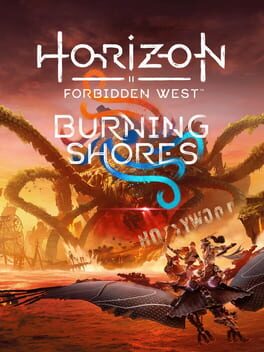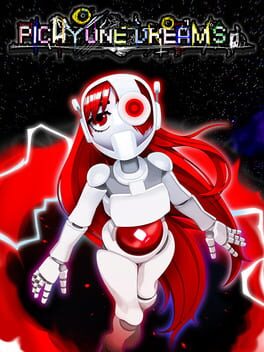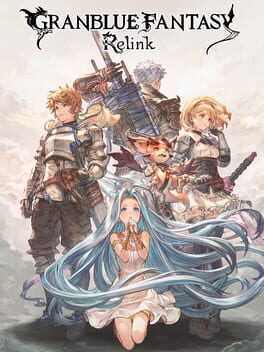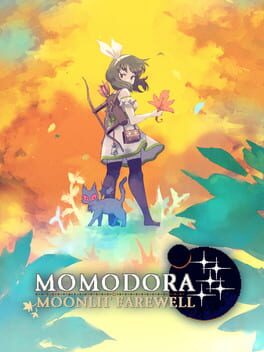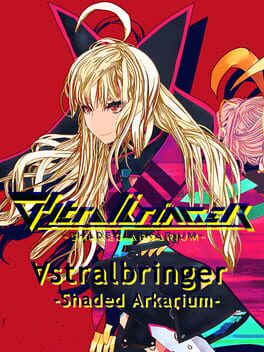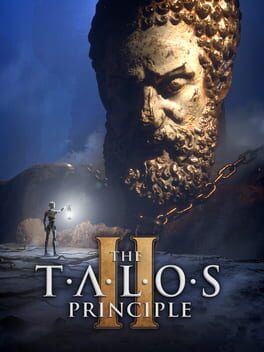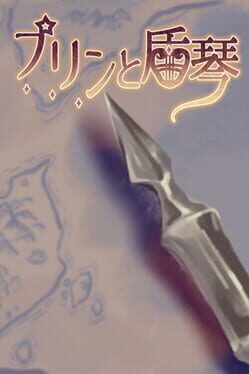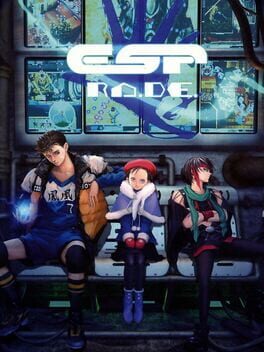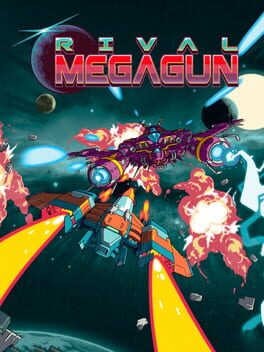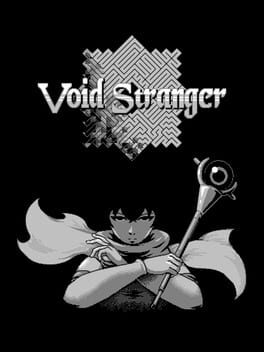xaerock
More forbidden west. Story is still meh, but main quest scenario is more focused (w/ less open world tedium) and has a better villain than the base game. Has a great final boss fight that is easily the best in the series and a nicer note to end things on.
Burning Shores part of the map being designed around flight is an improvement. The couple new machine types didn't really wow me over but boss fights make up for it.
Burning Shores part of the map being designed around flight is an improvement. The couple new machine types didn't really wow me over but boss fights make up for it.
Followup to Zero Dawn with somewhat improved combat and a story that's probably a step backwards.
Compared to the first game the story is less scifi with an interesting setup and instead diverges into generic marvel movie territory. The novelty of the unique setting is lost and you are left with some of the most worthless/forgettable villain characters I've seen in anything in a long time. There are some likeable characters mainly because the actors perform well. Aloy becomes a bit more of a character which I think is a positive development. It's not the worst thing ever but the writing hardly seems like a reason to play the game..
Combat is mostly the same but has new techniques and weapon types to mix things up. There are a lot of great new enemy types and enemies are more aggressive in general. Though the valor surge system feels really jank with a forced cut-in animation and inability to switch types without going back to your skill tree.
I still think the constant slow-motion system with concentration and weapon wheel menu is wonky, the game is in constant slowmo switching speeds which was alright for one game but seems a bit off to continue with. To keep up enemies become more and more fast but I don't think that deals with the core issue. Some enemies like Stalkers still feel well designed and fun to fight with the system.
VS humans combat is still ass but the more fleshed out melee combo system makes it better. Fighting bandits in the first game was very forgettable and this isn't too different.
Open world traversal is alright with very accessible fast travel options and pretty environments. Like the first game the 'platforming' mostly plays itself and is turning your brain off, same with puzzles. Somehow the game only stops giving tooltips for basic controls during the final mission (amazing that they noticed it would detract from the scenario). The worst thing is probably Aloy talking to herself constantly and also spoiling every small puzzle solution.
The few Cauldron 'dungeons' might be a step above the first game, each is fairly unique + if you're in it for the mechanical designs these are fun to look at as before.
Compared to the first game the story is less scifi with an interesting setup and instead diverges into generic marvel movie territory. The novelty of the unique setting is lost and you are left with some of the most worthless/forgettable villain characters I've seen in anything in a long time. There are some likeable characters mainly because the actors perform well. Aloy becomes a bit more of a character which I think is a positive development. It's not the worst thing ever but the writing hardly seems like a reason to play the game..
Combat is mostly the same but has new techniques and weapon types to mix things up. There are a lot of great new enemy types and enemies are more aggressive in general. Though the valor surge system feels really jank with a forced cut-in animation and inability to switch types without going back to your skill tree.
I still think the constant slow-motion system with concentration and weapon wheel menu is wonky, the game is in constant slowmo switching speeds which was alright for one game but seems a bit off to continue with. To keep up enemies become more and more fast but I don't think that deals with the core issue. Some enemies like Stalkers still feel well designed and fun to fight with the system.
VS humans combat is still ass but the more fleshed out melee combo system makes it better. Fighting bandits in the first game was very forgettable and this isn't too different.
Open world traversal is alright with very accessible fast travel options and pretty environments. Like the first game the 'platforming' mostly plays itself and is turning your brain off, same with puzzles. Somehow the game only stops giving tooltips for basic controls during the final mission (amazing that they noticed it would detract from the scenario). The worst thing is probably Aloy talking to herself constantly and also spoiling every small puzzle solution.
The few Cauldron 'dungeons' might be a step above the first game, each is fairly unique + if you're in it for the mechanical designs these are fun to look at as before.
2024
Feels more like a solid remake or a Dragons Dogma 1.5 than a sequel. It's more of the same which can be a good or bad thing depending on your expectations. For example, if you're expecting plenty of new enemy types, bosses or drastic changes to gameplay systems (like improved Pawn AI) compared to the first game that's really not here.
It's mostly the same game as Dragons Dogma 1 base game but bigger. The focus of the game is clearly on a general open world experience with fun to control player classes. There is very little on the side of tight combat focused dungeons like Bitterblack Isle (DD1 Dark Arisen expansion).
The combat and party management is still fun make no mistake, but it's definitely on the side of a power trip game where the player character grows powerful quickly (both statistically and mechanically) but enemies do not improve to match.
The variety of enemy encounters seems like one of the weakest points of the game. It's a sequel but 90% of the enemies you face are things you might already know from DD1. The bulk of enemies are trash mob level goblins, bandits and saurians which have 4-5 recolors based on how far you are in the game. But the way you fight them is exactly the same. It's not like they gain some threatening new attack or AI behavior, so going back to the first area to fight the same enemy class feels much the same.
I think this is a big loss since the core combat does feel good but the enemies really blur together and by the end of the game you might just be doing the same attack sequences and not care about what enemy you're fighting.
The difficulty level is low and XP gain from enemies scales very little; a mid-tier enemy like a Cyclops gives 1/3 the XP of an endgame boss. Exploring the map thoroughly will have you get overleveled for the main story quests quickly even if you don't intend to.
If you're looking for a challenging action RPG dungeon crawling experience like Bitterblack Isle or just lots of new enemies to face and new gameplay systems compared to DD1 that's not in DD2, at least on release.
It's mostly the same game as Dragons Dogma 1 base game but bigger. The focus of the game is clearly on a general open world experience with fun to control player classes. There is very little on the side of tight combat focused dungeons like Bitterblack Isle (DD1 Dark Arisen expansion).
The combat and party management is still fun make no mistake, but it's definitely on the side of a power trip game where the player character grows powerful quickly (both statistically and mechanically) but enemies do not improve to match.
The variety of enemy encounters seems like one of the weakest points of the game. It's a sequel but 90% of the enemies you face are things you might already know from DD1. The bulk of enemies are trash mob level goblins, bandits and saurians which have 4-5 recolors based on how far you are in the game. But the way you fight them is exactly the same. It's not like they gain some threatening new attack or AI behavior, so going back to the first area to fight the same enemy class feels much the same.
I think this is a big loss since the core combat does feel good but the enemies really blur together and by the end of the game you might just be doing the same attack sequences and not care about what enemy you're fighting.
The difficulty level is low and XP gain from enemies scales very little; a mid-tier enemy like a Cyclops gives 1/3 the XP of an endgame boss. Exploring the map thoroughly will have you get overleveled for the main story quests quickly even if you don't intend to.
If you're looking for a challenging action RPG dungeon crawling experience like Bitterblack Isle or just lots of new enemies to face and new gameplay systems compared to DD1 that's not in DD2, at least on release.
2023
Survivor-type game with boss fights that are more of a shmup style. The visual style is neat along with the music and it's a nice finishable game with a clear ending. But the gameplay loop is mind-numbingly boring. For the asking price it's fine as a product though.
The game basically plays itself as the most basic of twin-stick shooters as long as you pick powerups to form a build. There is some enemy variety but most of them don't change how you play, excluding one or two that shoot or spawn bullets.
The boss fights have some fun bullet patterns but are hardly better than your average shmup boss, so that isn't something that would elevate the gameplay beyond mediocrity. You are likely to turn on auto-targeting so there is no play with the weapons. That turns the boss fights into pure dodging with basic movement.
The bomb is satisfying to use at least, absorbing bullets into a counter attack.
The attempt to be more of a 'real' game than other survivor games kind of just makes me want to play actual twin-stick shooters with better level design and more interesting gameplay mechanics. It's not like there aren't plenty of those with enemy hordes or good boss fights. But again, the aesthetic in Picayune Dreams is nice.
The game basically plays itself as the most basic of twin-stick shooters as long as you pick powerups to form a build. There is some enemy variety but most of them don't change how you play, excluding one or two that shoot or spawn bullets.
The boss fights have some fun bullet patterns but are hardly better than your average shmup boss, so that isn't something that would elevate the gameplay beyond mediocrity. You are likely to turn on auto-targeting so there is no play with the weapons. That turns the boss fights into pure dodging with basic movement.
The bomb is satisfying to use at least, absorbing bullets into a counter attack.
The attempt to be more of a 'real' game than other survivor games kind of just makes me want to play actual twin-stick shooters with better level design and more interesting gameplay mechanics. It's not like there aren't plenty of those with enemy hordes or good boss fights. But again, the aesthetic in Picayune Dreams is nice.
Momentum-focused 3D platformer that feels like a 3D Sonic Team game from the Saturn era. Kind of a NiGHTS aesthetic going on as well. This game is about chaining special movement techniques back to back to move around quickly. Basic walking is a bad way to speed up or switch directions. Air dashing, using a grappling-hook type move and riding across terrain to keep your speed up is basically the core gameplay here.
The platforming levels get fairly challenging to clear later on. Mainly the optional Star levels but fully unlocking these requires completionist item collection which may not be for everyone.
The games boss fights seem very weak compared to the main platforming parts. I wish the Busker Bonus minigame wasn't in the game at all, being a trivial quick-time event at the end of every stage. It breaks the pace between levels a bit too much, including the minigame music not being stage specific.
Time Attack mode gets rid of this but that's essentially post-game. Speedrunning through levels does seem like the core appeal and most fun to have in the game.
Levels and especially boss fights have some dead air with auto scrolling rail grab, etc. sequences where you wait around for the next scene. The campaign feels a tiny bit bloated personally. I really started enjoying the level design around World 6-7.
When there isn't dead air the movement does feel very fast paced. Being a momentum based game messing up is just heavily punished. Even in optional levels you're often able to skip sections by fully using all your movement abilities.
The game at launch is a little buggy and also doesn't allow remapping your controls which is strange. The default 'pro' layout has many duplicate buttons and wants you to dash by double flicking the right stick which felt awkward. I had a much better experience after using Steam Input to change R1/RB to be a yo-yo throw button allowing dash by flicking the right stick once and pressing a button.
I had trouble perceiving depth visually on a few levels, especially if the ground is lava or something else that doesn't show the players shadow. Generally seems good though and I can imagine this being polished later.
The platforming levels get fairly challenging to clear later on. Mainly the optional Star levels but fully unlocking these requires completionist item collection which may not be for everyone.
The games boss fights seem very weak compared to the main platforming parts. I wish the Busker Bonus minigame wasn't in the game at all, being a trivial quick-time event at the end of every stage. It breaks the pace between levels a bit too much, including the minigame music not being stage specific.
Time Attack mode gets rid of this but that's essentially post-game. Speedrunning through levels does seem like the core appeal and most fun to have in the game.
Levels and especially boss fights have some dead air with auto scrolling rail grab, etc. sequences where you wait around for the next scene. The campaign feels a tiny bit bloated personally. I really started enjoying the level design around World 6-7.
When there isn't dead air the movement does feel very fast paced. Being a momentum based game messing up is just heavily punished. Even in optional levels you're often able to skip sections by fully using all your movement abilities.
The game at launch is a little buggy and also doesn't allow remapping your controls which is strange. The default 'pro' layout has many duplicate buttons and wants you to dash by double flicking the right stick which felt awkward. I had a much better experience after using Steam Input to change R1/RB to be a yo-yo throw button allowing dash by flicking the right stick once and pressing a button.
I had trouble perceiving depth visually on a few levels, especially if the ground is lava or something else that doesn't show the players shadow. Generally seems good though and I can imagine this being polished later.
Really polished Action RPG with Monster Hunter-like quest structure. The main story doesn't overstay its welcome & quest system keeps things refreshingly focused compared to your typical big budget ARPG. I think this game could be god tier depending on the quality of challenging endgame content added post-release.
As it is it has all the makings of one but the 'optional' content is very easy and takes a long time to build up (especially if you touch multiplayer) while player side mechanics are really strong.
Combat definitely feels very platinum games-like. A bit simple but each character is very unique from the other. The skill ceiling is still higher than you might think and some characters are more technical than others.
The amount of quality of life features is kind of incredible, from training modes to wishlists etc. As a comparison both of those features are pulled off better than monster hunter. The downtime / busywork you need to do between quests is extremely minimal.
Enemy attacks & AoEs have the cleanest visual indicators i've seen in a 3D action game like this from memory. They can definitely up the difficulty without visibility being an issue.
Misc. gripes:
The disparity between multiplayer and single player difficulty is too big. It's not good if multiplayer feels like an easy/cheat mode. This is a bit like if monhun didn't scale quests to be harder based on player count.
Guard seems nonsensically strong. Many bosses have attack patterns where you can't do anything but dodge until it times out. But guess what. You can just stand in place and hold the guard button. If you got hit it's because you assumed you need to do something. There are very few fights with unblockable attacks, and it's usually some mid-tier monster instead of an endgame boss.
There are many bosses where the only challenging part of the fight is a DPS check. This is pretty cringe & even if the rest of fight was fun in a challenge run (say playing 1 character only) that limitation might make the dps check part impossible. Struggling through a difficult fight with a lowish power party isn't rewarded, rather you kinda get punished for good gameplay through the rest of the fight.
Lock-on and targeting behavior is strange with your character very likely trying to hit something on the other side of the map, if the movement direction matches more.
The auto tracking on your moves is really strong even without locking. If manual aim could be more of its own thing ala monster hunter this could make some characters with slower attacks more fun to play.
Launch version specific:
The endgame quests aren't very interesting for multiplayer play. Only 1-2 quests are challenging for survival if played with random people (main one having multiple bosses at once, one with many unblockables). For others if you are playing multiplayer you can assume there's no chance of quest failure and it's just a speedrun to get to your loot drop gacha. Getting hit also barely costs you time or resources unless it kills you, unlike monhun. Tanking hits is the way to go if you are specced above the quest level. The 'final' farmable quest is more of a setpiece & dps check fest than actual combat which is pretty meh.
As it is it has all the makings of one but the 'optional' content is very easy and takes a long time to build up (especially if you touch multiplayer) while player side mechanics are really strong.
Combat definitely feels very platinum games-like. A bit simple but each character is very unique from the other. The skill ceiling is still higher than you might think and some characters are more technical than others.
The amount of quality of life features is kind of incredible, from training modes to wishlists etc. As a comparison both of those features are pulled off better than monster hunter. The downtime / busywork you need to do between quests is extremely minimal.
Enemy attacks & AoEs have the cleanest visual indicators i've seen in a 3D action game like this from memory. They can definitely up the difficulty without visibility being an issue.
Misc. gripes:
The disparity between multiplayer and single player difficulty is too big. It's not good if multiplayer feels like an easy/cheat mode. This is a bit like if monhun didn't scale quests to be harder based on player count.
Guard seems nonsensically strong. Many bosses have attack patterns where you can't do anything but dodge until it times out. But guess what. You can just stand in place and hold the guard button. If you got hit it's because you assumed you need to do something. There are very few fights with unblockable attacks, and it's usually some mid-tier monster instead of an endgame boss.
There are many bosses where the only challenging part of the fight is a DPS check. This is pretty cringe & even if the rest of fight was fun in a challenge run (say playing 1 character only) that limitation might make the dps check part impossible. Struggling through a difficult fight with a lowish power party isn't rewarded, rather you kinda get punished for good gameplay through the rest of the fight.
Lock-on and targeting behavior is strange with your character very likely trying to hit something on the other side of the map, if the movement direction matches more.
The auto tracking on your moves is really strong even without locking. If manual aim could be more of its own thing ala monster hunter this could make some characters with slower attacks more fun to play.
Launch version specific:
The endgame quests aren't very interesting for multiplayer play. Only 1-2 quests are challenging for survival if played with random people (main one having multiple bosses at once, one with many unblockables). For others if you are playing multiplayer you can assume there's no chance of quest failure and it's just a speedrun to get to your loot drop gacha. Getting hit also barely costs you time or resources unless it kills you, unlike monhun. Tanking hits is the way to go if you are specced above the quest level. The 'final' farmable quest is more of a setpiece & dps check fest than actual combat which is pretty meh.
Solid if linear metroidvania game with nice graphics, but nothing really stands out to me gameplay wise. Still recommended if you're OK with a chill but very generic game of this type.
My main gripe is I don't see what's supposed to be the gameplay hook or improvement compared to Momodora: Reverie under the Moonlight. Instead of there being new mechanics (especially for movement) there are less of them and a stamina bar to limit how many actions you can perform. This mainly makes moving around the levels slow. The difficulty of the game is lowish for a first playthrough since modes above normal are reserved to NG+. The amount of post-game content seems generous, but assuming everyone wants to do multiple playthroughs is a mixed bag.
There are basically no movement tools to make map traversal or speedruns more interesting than an extremely vanilla metroidvania game (compared to RutM which had a decent amount). Enemies tend to be passive and slow. The invulnerable evade tied to stamina is a major focus in combat, with a lot of things coming down to evading when the indicator pops up instead of using a variety of movement options to get around attacks. This makes melee fights feel pretty samey and slow-paced. Granted enemies which focus on ranged attacks have more variety. More of these appear later in the game.
I felt like the main thing the stamina gauge accomplishes is make early game feel like a slog. Gives a sense of progress later but is hardly worth the cost. The level design gets interesting near the end but since the early game is so slow it takes up most of your playtime. I assume the point is easing the player into a chill story focused experience with basic gameplay.
My main gripe is I don't see what's supposed to be the gameplay hook or improvement compared to Momodora: Reverie under the Moonlight. Instead of there being new mechanics (especially for movement) there are less of them and a stamina bar to limit how many actions you can perform. This mainly makes moving around the levels slow. The difficulty of the game is lowish for a first playthrough since modes above normal are reserved to NG+. The amount of post-game content seems generous, but assuming everyone wants to do multiple playthroughs is a mixed bag.
There are basically no movement tools to make map traversal or speedruns more interesting than an extremely vanilla metroidvania game (compared to RutM which had a decent amount). Enemies tend to be passive and slow. The invulnerable evade tied to stamina is a major focus in combat, with a lot of things coming down to evading when the indicator pops up instead of using a variety of movement options to get around attacks. This makes melee fights feel pretty samey and slow-paced. Granted enemies which focus on ranged attacks have more variety. More of these appear later in the game.
I felt like the main thing the stamina gauge accomplishes is make early game feel like a slog. Gives a sense of progress later but is hardly worth the cost. The level design gets interesting near the end but since the early game is so slow it takes up most of your playtime. I assume the point is easing the player into a chill story focused experience with basic gameplay.
Over-the-top Shmup/STG with mouse control for movement. Has a lot of similarities to Akashicverse by the same developer. The game defaults to mouse control but there is an option for gamepad. There's a shop system to unlock moves and increase stats.
I think the crazy speed potential of mouse control fits well with the kind of bosses and stage design in Endless Shirafu games. They tend to have fast paced and unique attacks which require memorization to deal with. Mouse control doesn't make those aspects redundant and potentially gives the player a higher 'power level' so it's interesting to test the concept here.
∀stralbringer can be really challenging if you try playing with base equipment and avoiding the shop. The skill ceiling with just the base tools seems really high. Mouse movement control has crazy potential & grazing/bullet absorb mechanics with this have some interesting synergy (seems similar to the Psyvariar mobile game).
If you want it to get easier you can power up over progress and gain access to additional Methods/Skills. The strange thing is you barely need to scratch the surface of the mechanics to clear the Early Access / non-DLC content. This personally made most of the mechanics seem underbaked because they just don't matter. The game felt 'cleaner' with access to only initial tools but once you expand to the full set of abilities this explodes out of hand and becomes kind of messy.
If you want endgame content or English language support wait for the game to exit Early Access. The base game is similar to if Akashicverse was missing 1-2 of the final stages. Pricing seems reasonable regardless.
note: the trial and current Early Access version appear to require you to set the Windows Region setting 'Language for non-Unicode programs' to Japanese to run properly. Otherwise it will crash at launch.
I think the crazy speed potential of mouse control fits well with the kind of bosses and stage design in Endless Shirafu games. They tend to have fast paced and unique attacks which require memorization to deal with. Mouse control doesn't make those aspects redundant and potentially gives the player a higher 'power level' so it's interesting to test the concept here.
∀stralbringer can be really challenging if you try playing with base equipment and avoiding the shop. The skill ceiling with just the base tools seems really high. Mouse movement control has crazy potential & grazing/bullet absorb mechanics with this have some interesting synergy (seems similar to the Psyvariar mobile game).
If you want it to get easier you can power up over progress and gain access to additional Methods/Skills. The strange thing is you barely need to scratch the surface of the mechanics to clear the Early Access / non-DLC content. This personally made most of the mechanics seem underbaked because they just don't matter. The game felt 'cleaner' with access to only initial tools but once you expand to the full set of abilities this explodes out of hand and becomes kind of messy.
If you want endgame content or English language support wait for the game to exit Early Access. The base game is similar to if Akashicverse was missing 1-2 of the final stages. Pricing seems reasonable regardless.
note: the trial and current Early Access version appear to require you to set the Windows Region setting 'Language for non-Unicode programs' to Japanese to run properly. Otherwise it will crash at launch.
2023
Solid spiritual sequel to Rabi-Ribi. Interesting gameplay mechanic additions and the exploration aspect is more fleshed out. Difficulty seems a bit lower. Boss fights are excellent but unlike Rabi-Ribi this doesn't feel like a bossrush game, for better or worse. It's more of a balanced metroidvania game. Movement mechanics are more gated behind progress and basically all mechanics are tutorialized instead of being left to player discovery.
TEVI still suffers from having to unlock higher difficulty modes over multiple playthroughs and repeat the same metroidvania collectathon between them. Personally annoying since I mainly want to see the boss fights on Infernal, not hunt through hundreds of rooms for items again.
I prefer the more linear stage design introduced in the Rabi-Ribi DLC (TEVI has linear & boss rush sections near the endgame, these feel similar) and would be more keen to replay such a game across different modes.
In TEVI even though the exploration & secret hunting are improved: if they're not the games strongest point is it really worth expanding to be a bigger part of the game? (eg. exploration taking up more hours between every combat & boss section). Same goes for the story being more of a focus, but I don't really mind.
For presentation I found the music to be great much like Rabi-Ribi. In-combat visuals are nice and it's generally clear to see what's going on, combining well with the snappy controls. That is apart from a screen shake effect introduced during a couple specific boss attacks that just makes it hard to see what's happening.
TEVI still suffers from having to unlock higher difficulty modes over multiple playthroughs and repeat the same metroidvania collectathon between them. Personally annoying since I mainly want to see the boss fights on Infernal, not hunt through hundreds of rooms for items again.
I prefer the more linear stage design introduced in the Rabi-Ribi DLC (TEVI has linear & boss rush sections near the endgame, these feel similar) and would be more keen to replay such a game across different modes.
In TEVI even though the exploration & secret hunting are improved: if they're not the games strongest point is it really worth expanding to be a bigger part of the game? (eg. exploration taking up more hours between every combat & boss section). Same goes for the story being more of a focus, but I don't really mind.
For presentation I found the music to be great much like Rabi-Ribi. In-combat visuals are nice and it's generally clear to see what's going on, combining well with the snappy controls. That is apart from a screen shake effect introduced during a couple specific boss attacks that just makes it hard to see what's happening.
Nice followup to Talos 1 core gameplay wise. Kind of misses the point of the first games unique storytelling and pacing by shoving in triple-A game tropes.
Difficulty of puzzles is moderate and doesn't curve upwards much. For most levels each area introduces new mechanics starting from a basic concept instead of them getting cumulatively more difficult. I wish there was more content like the gold puzzles.
Not sure if I like the voiced dialogue & AAA-ish action sequences. I feel like the major strength of Talos 1 is that the game world & text logs are something you discover and take in entirely on your own pace. I thought 2 having character dialogues & cliche sequences shoved in your face from the get-go takes away from that much more than it gives in return. Text terminals & messaging still have some of that old appeal. Though it does get better about the voiced dialogue later on.
World environments are super pretty but I felt like I was running fetchquests using map markers and dialing through voiced dialogue instead of really taking the areas in. That's probably my own fault for rushing through the game.
Music does a great job fitting the puzzles & locations.
I'm hoping for a DLC expansion like Gehenna but it's kind of weird when this game already has a LOT of puzzles. They just hover around the same difficulty. Not sure why when they added an optional mechanic to skip a lot of puzzles if needed.
About the AAA setpieces.. maybe unlike the Institute for Applied Noematics just because you could doesn't mean you should. If there's a cinematic/dialogue sequence that feels forced it makes the game appear more generic. Instead of playing into its unique strengths.
Difficulty of puzzles is moderate and doesn't curve upwards much. For most levels each area introduces new mechanics starting from a basic concept instead of them getting cumulatively more difficult. I wish there was more content like the gold puzzles.
Not sure if I like the voiced dialogue & AAA-ish action sequences. I feel like the major strength of Talos 1 is that the game world & text logs are something you discover and take in entirely on your own pace. I thought 2 having character dialogues & cliche sequences shoved in your face from the get-go takes away from that much more than it gives in return. Text terminals & messaging still have some of that old appeal. Though it does get better about the voiced dialogue later on.
World environments are super pretty but I felt like I was running fetchquests using map markers and dialing through voiced dialogue instead of really taking the areas in. That's probably my own fault for rushing through the game.
Music does a great job fitting the puzzles & locations.
I'm hoping for a DLC expansion like Gehenna but it's kind of weird when this game already has a LOT of puzzles. They just hover around the same difficulty. Not sure why when they added an optional mechanic to skip a lot of puzzles if needed.
About the AAA setpieces.. maybe unlike the Institute for Applied Noematics just because you could doesn't mean you should. If there's a cinematic/dialogue sequence that feels forced it makes the game appear more generic. Instead of playing into its unique strengths.
TBD
Pudding (& Shield Lyre) is a game by developer Katatema mixing puzzle, shooting game and visual novel elements. A similar mix of genres to many of their previous games.
Compared to Murasaki this game is smaller in scope and with less focus on the shooting game (shmup) aspect. Pudding leans more heavily into the story setting & character building.
You have to unveil the story piece by piece which also translates into gameplay in this case.
Similar to Katatema's other games the world has a distinct visual style along with a strong soundtrack.
Experiencing this game feels a bit like a fantasy short story in videogame form. It was refreshing to play accompanied with the presentation. Even if it's a small package it was charming and easily worth the price and time spent.
NOTE: The game is only available in japanese language at time of review. This review is assuming you can read most of the story for context by one means or another. Even with a language barrier it can be a fun experience if you enjoyed the developers previous games.
Compared to Murasaki this game is smaller in scope and with less focus on the shooting game (shmup) aspect. Pudding leans more heavily into the story setting & character building.
You have to unveil the story piece by piece which also translates into gameplay in this case.
Similar to Katatema's other games the world has a distinct visual style along with a strong soundtrack.
Experiencing this game feels a bit like a fantasy short story in videogame form. It was refreshing to play accompanied with the presentation. Even if it's a small package it was charming and easily worth the price and time spent.
NOTE: The game is only available in japanese language at time of review. This review is assuming you can read most of the story for context by one means or another. Even with a language barrier it can be a fun experience if you enjoyed the developers previous games.
1998
1CC:d with all characters.
I love the aesthetic and general pace of this game and it was the first CAVE game that grabbed me. But it has some really janky things I cant dismiss:
- When you end slow movement by releasing the fire button there is 0.5s delay until you begin moving full speed again. This results in a burst of speed outside of your control unless you do a planned stop in place while unfocusing. Extremely weird design decision. The delay only makes sense for entering slow movement (without a rapid button), not exiting.
- One of the heaviest and most annoying slowdown behavior in any CAVE game. Super heavy slowdowns at parts of the game. At least it's not affected by player fire as much as SDOJ.
- Scoring system ruined with broken boss milking. Big portion goes to End bonus though so there is definitely something to play for after clearing the game. However M2:s PSI PS4/Switch ports alternate mode basically fixes the system.
I love the aesthetic and general pace of this game and it was the first CAVE game that grabbed me. But it has some really janky things I cant dismiss:
- When you end slow movement by releasing the fire button there is 0.5s delay until you begin moving full speed again. This results in a burst of speed outside of your control unless you do a planned stop in place while unfocusing. Extremely weird design decision. The delay only makes sense for entering slow movement (without a rapid button), not exiting.
- One of the heaviest and most annoying slowdown behavior in any CAVE game. Super heavy slowdowns at parts of the game. At least it's not affected by player fire as much as SDOJ.
- Scoring system ruined with broken boss milking. Big portion goes to End bonus though so there is definitely something to play for after clearing the game. However M2:s PSI PS4/Switch ports alternate mode basically fixes the system.
Great core campaign. Controls feel perfect, visuals are impressively distinct for the setting & somehow this has the least performance issues of any modern fromsoft game.
However the enemy ACs are way too weak compared to the big boss fights. This undermines the character personalities & Armored Core being all about personalized unique AC builds since when you fight the given examples it's just fluff.
Multiplayer environment, Weapon balance, S-ranking system & overall post-game content seem very underwhelming (especially compared to Verdict Day).
Hoping these get fleshed out for this game to have more lasting appeal. The devs did repeatedly say this focuses on the main campaign. By series tradition AC6.5 could expand on all these aspects and be really amazing.
If the multiplayer & balance in 6.5 was brought up to spec with ACVD fans would easily stick around playing it for a decade constantly adjusting ACs for team builds just like that game.
However the enemy ACs are way too weak compared to the big boss fights. This undermines the character personalities & Armored Core being all about personalized unique AC builds since when you fight the given examples it's just fluff.
Multiplayer environment, Weapon balance, S-ranking system & overall post-game content seem very underwhelming (especially compared to Verdict Day).
Hoping these get fleshed out for this game to have more lasting appeal. The devs did repeatedly say this focuses on the main campaign. By series tradition AC6.5 could expand on all these aspects and be really amazing.
If the multiplayer & balance in 6.5 was brought up to spec with ACVD fans would easily stick around playing it for a decade constantly adjusting ACs for team builds just like that game.
2018
Versus shmup that feels the closest to a traditional arcade shmup out of this type of game I've played (compared to say Twinkle Star Sprites which is more puzzle-like and has a lot of unique quirks + neogeo slowdown). Single player is pretty solid too and there are difficulty modes to match any level of player.
Multiplayer games especially on the highest difficulty can get really hectic with the bullet patterns resulting in fun improvised dodging. Highly recommended to fans of the genre if just for this.
Netcode works nicely with input delay not being introduced unless you're controlling a boss form. You can easily play across continents with little issue, and bosses having their control nerfed is honestly justified for most of them.
There is an equipment system which sounds bizarre but in my experience overall makes the game better. The baseline ships feel a bit underpowered to clearing out enemies. While if you are playing with powered up shot + return bullets (these cause enemy kill chains like TSS, or deal tactical damage to bosses!) you can get up to crazy enemy patterns as the game keeps getting harder the longer you survive. Super fun in PVP matches.
For the past few years there has been a japanese & international group playing online on PC every Saturday @ 9pm JST for a few hours. The longevity of that group should be some proof to this being a hidden gem of a game.
Multiplayer games especially on the highest difficulty can get really hectic with the bullet patterns resulting in fun improvised dodging. Highly recommended to fans of the genre if just for this.
Netcode works nicely with input delay not being introduced unless you're controlling a boss form. You can easily play across continents with little issue, and bosses having their control nerfed is honestly justified for most of them.
There is an equipment system which sounds bizarre but in my experience overall makes the game better. The baseline ships feel a bit underpowered to clearing out enemies. While if you are playing with powered up shot + return bullets (these cause enemy kill chains like TSS, or deal tactical damage to bosses!) you can get up to crazy enemy patterns as the game keeps getting harder the longer you survive. Super fun in PVP matches.
For the past few years there has been a japanese & international group playing online on PC every Saturday @ 9pm JST for a few hours. The longevity of that group should be some proof to this being a hidden gem of a game.
2023
Floor renovation game for the WonderSwan. Welcome to Void-Lana, borne from the disappearance of La-Mulana...
---
This puzzle game does some REALLY cool things and has a lot of personality. But it breaks a few genre norms which for me make the world not that enjoyable to traverse. The resulting uncertainty also requires a lot of faith from the player. Still, play blind if possible.
I also wish the game had internal tools for taking notes and pictures ala. La-Mulana 2, to stay a fully self-contained experience. Trying to be meta and encourage external tools (e.g. screenshots) isn't something I see as a positive.
The core puzzle solving experience is quite fun and can get very challenging.
Void Stranger's visual themes are distinct from ZeroRanger and the soundtrack has a lot of variety. I think you can see the growth of the dev team in both.
...Don't ask how I know.
(played without external spoilers)
---
This puzzle game does some REALLY cool things and has a lot of personality. But it breaks a few genre norms which for me make the world not that enjoyable to traverse. The resulting uncertainty also requires a lot of faith from the player. Still, play blind if possible.
I also wish the game had internal tools for taking notes and pictures ala. La-Mulana 2, to stay a fully self-contained experience. Trying to be meta and encourage external tools (e.g. screenshots) isn't something I see as a positive.
The core puzzle solving experience is quite fun and can get very challenging.
Void Stranger's visual themes are distinct from ZeroRanger and the soundtrack has a lot of variety. I think you can see the growth of the dev team in both.
...Don't ask how I know.
(played without external spoilers)
